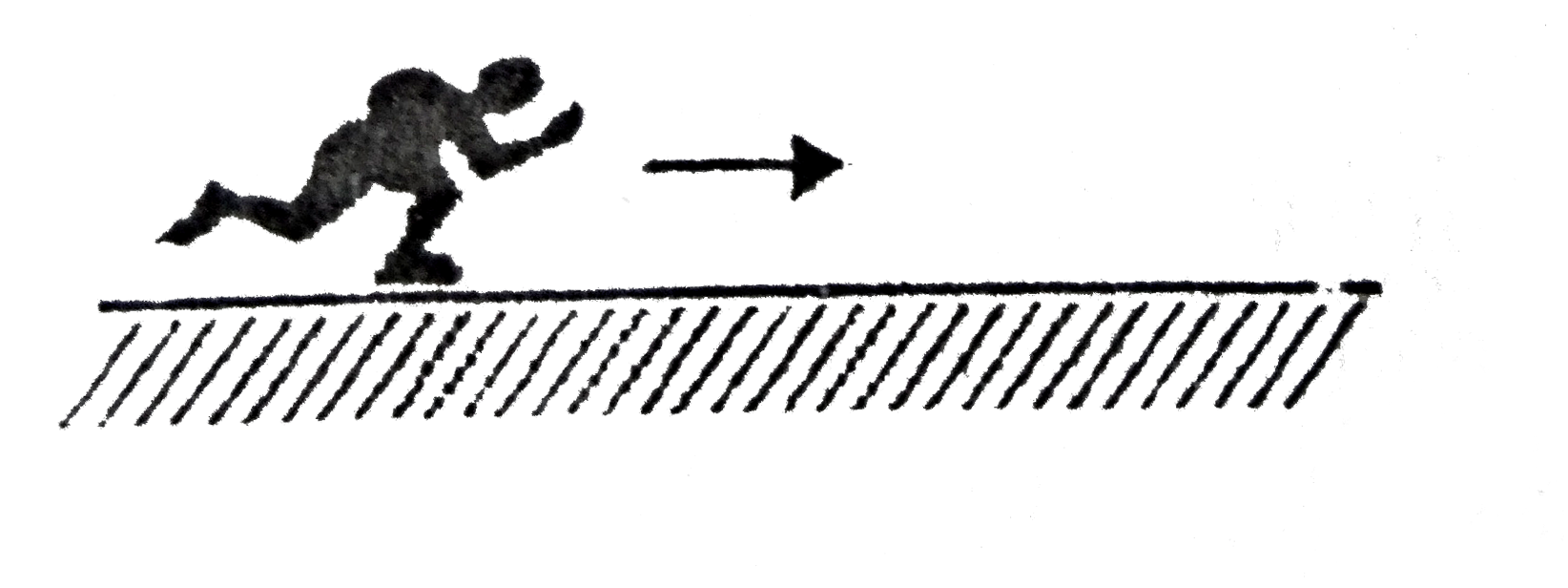The velocity v of a body moving along a straight line varies with time t as v=2t2e−t, where v is in m/s and t is in second. The acceleration of body is zero at t =
0
2 s
3
Both (1) & (2)
The correct Answer is:D
To find the time t at which the acceleration of the body is zero, we start with the given velocity function:
v(t)=2t2e−t
Step 1: Find the acceleration
Acceleration a(t) is the rate of change of velocity with respect to time, which is given by:
a(t)=dvdt
Step 2: Differentiate the velocity function
We will use the product rule to differentiate v(t). The product rule states that if you have two functions u(t) and w(t), then:
d(uw)dt=udwdt+wdudt
In our case, let:
- u(t)=2t2
- w(t)=e−t
Now we differentiate both parts:
- dudt=4t
- dwdt=−e−t
Applying the product rule:
dvdt=udwdt+wdudt
Substituting the values:
dvdt=2t2⋅(−e−t)+e−t⋅(4t)
This simplifies to:
dvdt=−2t2e−t+4te−t
Step 3: Factor out common terms
We can factor out e−t:
dvdt=e−t(−2t2+4t)
Step 4: Set acceleration to zero
To find when the acceleration is zero, we set dvdt=0:
e−t(−2t2+4t)=0
Since e−t is never zero, we focus on the quadratic part:
−2t2+4t=0
Step 5: Solve the quadratic equation
Factoring out −2t:
−2t(t−2)=0
This gives us two solutions:
t=0ort=2
Conclusion
The acceleration of the body is zero at t=0 seconds and t=2 seconds.
Acceleration a(t) is the rate of change of velocity with respect to time, which is given by:
We will use the product rule to differentiate v(t). The product rule states that if you have two functions u(t) and w(t), then:
- u(t)=2t2
- w(t)=e−t
- dudt=4t
- dwdt=−e−t
We can factor out e−t:
To find when the acceleration is zero, we set dvdt=0:
Factoring out −2t:
The acceleration of the body is zero at t=0 seconds and t=2 seconds.
Topper's Solved these Questions
- MOTION IN A STRAIGHT LINEBOOK - AAKASH INSTITUTECHAPTER - MOTION IN A STRAIGHT LINEEXERCISE - ASSIGNMENT (SECTION - C)
37 Videos
- MOTION IN A STRAIGHT LINEBOOK - AAKASH INSTITUTECHAPTER - MOTION IN A STRAIGHT LINEEXERCISE - ASSIGNMENT (SECTION - D)
15 Videos
- MOTION IN A STRAIGHT LINEBOOK - AAKASH INSTITUTECHAPTER - MOTION IN A STRAIGHT LINEEXERCISE - ASSIGNMENT (SECTION - A)
60 Videos
- MOTION IN A PLANEBOOK - AAKASH INSTITUTECHAPTER - MOTION IN A PLANEEXERCISE - Assignement section -J (Aakash Challengers Questions)
4 Videos
- MOTION IN STRAIGHT LINEBOOK - AAKASH INSTITUTECHAPTER - MOTION IN STRAIGHT LINEEXERCISE - Assignment (SECTION - J)
2 Videos
Similar Questions
The speed(v) of a particle moving along a straight line is given by v=(t2+3t−4 where v is in m/s and t in seconds. Find time t at which the particle will momentarily come to rest.
View SolutionThe displacement of a particle moving in a straight line, is given by s=2t2+2t+4 where s is in metres and t in seconds. The acceleration of the particle is.
View Solution
Knowledge Check
The velocity 'v' of a particle moving along straight line is given in terms of time t as v=3(t2−t) where t is in seconds and v is in m/s.
The displacement of aprticle from t=0 to t=2 seconds is :A1mB2mC3mD4mThe velocity 'v' of a particle moving along straight line is given in terms of time t as v=3(t2−t) where t is in seconds and v is in m/s.
The speed is minimum after t=0 second at instant of timeA0.5secB1secC2secDNone of theseThe velocity 'v' of a particle moving along straight line is given in terms of time t as v=3(t2−t) where t is in seconds and v is in m/s.
The distance travelled by particle from t=0 to t=2seconds is :A2mB3mC4mD6m
The velocity of an object moving rectillinearly is given as a functiion of time by v=4t−3t2 where v is in m/s and t is in seconds. The average velociy if particle between t=0 to t=2 seconds is
View SolutionThe equation of motion of a particle moving along a straight line is s=2t3−9t2+12t, where the units of s and t are centrimetre and second. The acceleration of the particle will be zero after
View SolutionIf a man has a velocity varying with time given as v=3t2,v is in m/s and t in sec then :

Find out his acceleration after 3 seconds :
View SolutionVelocity of a particle moving in a curvilinear path varies with time as v=(2tˆi+t2ˆk)m/s. Here t is in second. At t=1 s
View SolutionThe equation of a particle moving along a straight line is s=2t3–9t2+12t, where the units of s and t are cm and s. the acceleration of the particle will be zero after
View Solution
